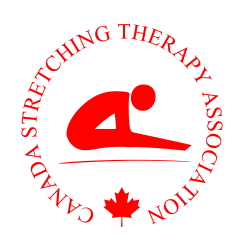Flexibility and myofascial health are essential elements for improving physical adaptability, enhancing athletic performance, and reducing the risk of sports-related injuries. This comprehensive course combines stretching and myofascial release exercises to provide participants with in-depth knowledge and skills to improve flexibility, maintain myofascial health, and assist in addressing painful conditions.
Throughout this course, we will explore the application of stretching and myofascial release techniques to address painful conditions such as trigger points and the resulting lower back pain caused by shortened myofascial tissues.
Learning Objectives: Upon completion of this program the successful student will have the ability to:
1. Understanding the Principles of Stretching: Gain a comprehensive understanding of the principles behind stretching, including the physiological and biomechanical aspects involved in flexibility training.
2. Knowledge of Anatomy and Muscle Function: Acquire knowledge about the human anatomy, specifically related to muscles, joints, and connective tissues. Understand how different muscles work and their role in movement and flexibility.
3. Familiarity with Stretching Techniques: Learn a variety of stretching techniques, including static stretching, dynamic stretching, PNF (proprioceptive neuromuscular facilitation) stretching, and myofascial release. Understand when and how to apply each technique effectively.
4. Ability to Design Stretching Programs: Develop the skills to design and structure effective stretching programs based on individual needs, fitness goals, and specific populations. Learn to tailor stretching routines for different age groups, fitness levels, and sport-specific requirements.
5. Assessment and Progress Monitoring: Learn how to assess flexibility levels and track progress in individuals. Understand the use of various flexibility assessment methods and tools to evaluate range of motion and identify areas for improvement.
6. Safety and Injury Prevention: Gain knowledge of proper body mechanics, alignment, and safety guidelines to minimize the risk of injury during stretching exercises. Understand contraindications and precautions related to stretching to ensure the well-being of clients.
7. Instruction and Communication Skills: Develop effective communication and teaching skills to guide individuals or groups through stretching exercises. Learn how to provide clear instructions, demonstrate correct techniques, and offer modifications or adjustments as needed.
8. Professional Ethics and Scope of Practice: Understand the professional ethics, standards, and legal considerations associated with being a stretch teacher. Learn about the boundaries and limitations of the role, recognizing when to refer clients to other healthcare professionals if necessary.
Job Opportunities: Upon successful completion of this course, students will have the following employment opportunities:
1. Stretching Instructor/Trainer: Stretch teachers can work in fitness centers, gyms, or wellness facilities, providing individual or group stretching sessions to clients. They may also incorporate stretching techniques into fitness classes or personal training sessions.
2. Sports Coach: Many sports teams and athletic organizations recognize the importance of flexibility and injury prevention. Stretch teachers can work as sports coaches, specializing in stretching and flexibility training for athletes to enhance performance and reduce the risk of injuries.
3. Rehabilitation Specialist: In collaboration with physiotherapists or other healthcare professionals, stretch teachers can assist in the rehabilitation process by providing specific stretching exercises to aid in recovery from injuries or surgeries.
4. Corporate Wellness Programs: Companies often prioritize employee wellness and offer workplace wellness programs. Stretch teachers can be employed to conduct stretching sessions as part of these programs to promote physical well-being and reduce musculoskeletal issues resulting from sedentary work environments.
5. Yoga or Pilates Instructor: Stretch teachers who have additional training or certifications in yoga or Pilates can work as instructors, guiding individuals through various stretches and movement sequences to improve flexibility, balance, and core strength.
6. Freelance/Independent Practitioner: Some stretch teachers choose to establish their own private practice, offering individualized stretching sessions, mobility assessments, and personalized stretching programs to clients. They may operate from a studio, visit clients at their homes, or provide online coaching.
Admission Requirements:
High school graduation or minimum age of 18 for adult students.
Course Duration: 100 hours (Teaching 75hrs; self study:25hrs)
Terms and Grading Criteria:
Course Dates: TBC
Sat : 13:00-18:00
Sun: 10:00-16:00
Exam Date: Mar 9, 2025
Trainer:
Language:
Location:28 South Unionville Ave #2089Markham, ON L3R 1J5 (Above the “Garden Hong Kong Cafe”)
Early Bird: $2200 (Register and Pay before December 5, 2024);
Registeration Link: https://alt.jotfor.ms/Stretching/stretch-teacher-certification
Assessment Methods: Written examination (50%); Practical examination (50%); Passing score: 70%
Outline:
- Fundamentals of Exercise Theory
- Overview of Myology
- Comprehensive Concepts of Stretching and Myofascial Release
- Principles of Stretching and Myofascial Release
- Flexibility Testing and Assessment
- Stretching and Myofascial Release Exercises for Various Muscle Groups
- Application of Tools: Foam Roller and Other Equipment
- Integration, Practical Applications (Hands-on adjustment) and Case Studies
Fees for Stretch Teacher Certification Course
| Item | Fees |
| Application Fee | 250 (Non-refund) |
| Tuition Fee | 2,500 |
| Course Material Fee | 200 |
| Total | $2,950 (Early Bird: $2200) |
Registeration Link: https://alt.jotfor.ms/Stretching/stretch-teacher-certification
To inquire about registration, please contact: support@stretchingtherapy.ca
